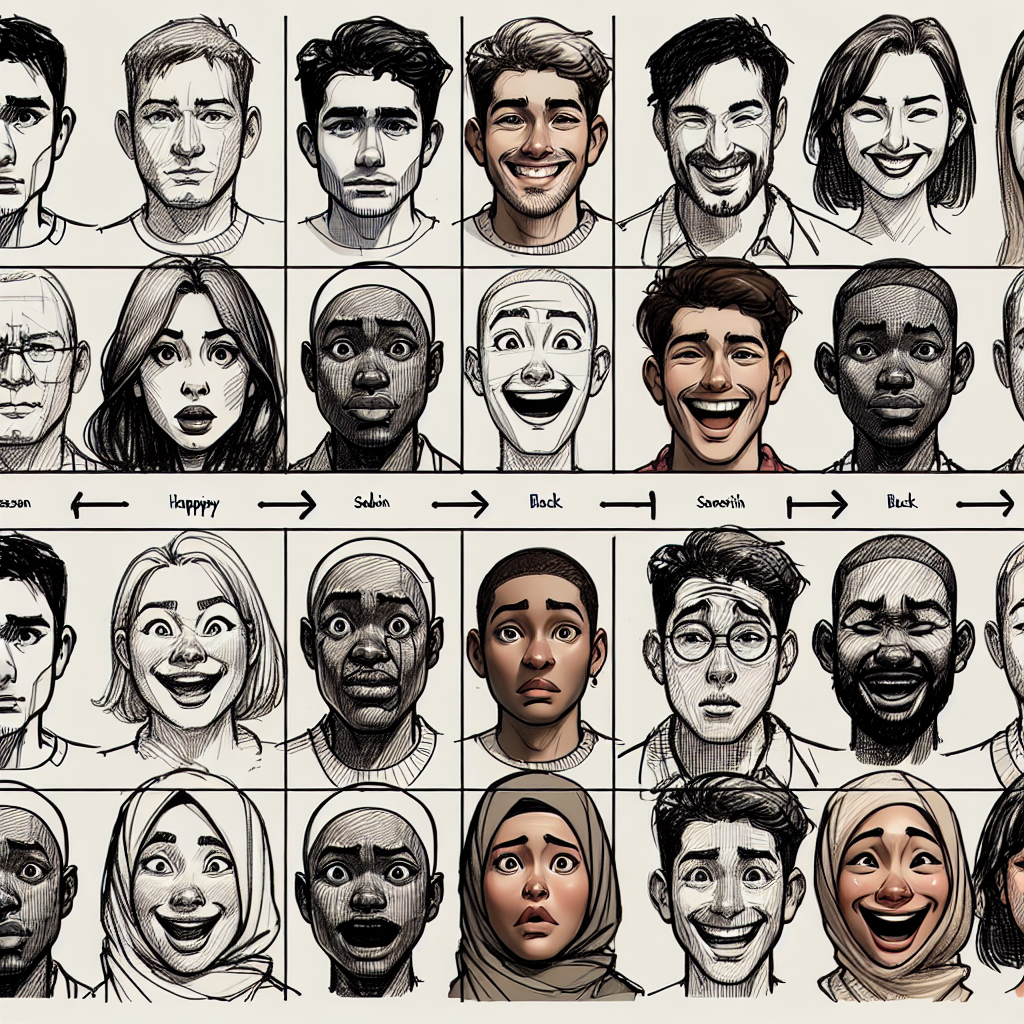Have you ever looked at a cartoon and felt an instant connection to the character’s emotions? Maybe you chuckled at their exaggerated expressions or felt a pang of empathy for their sadness. Cartoons have a unique ability to capture the essence of human emotions in a way that is both entertaining and relatable. In this article, we will explore how cartoons are able to express a wide range of emotions with just a few simple lines and colors, and how they can resonate with us on a deeply personal level.
The Power of Facial Expressions
One of the key elements that make cartoons so effective at conveying emotions is their use of facial expressions. From the raised eyebrows of surprise to the downturned mouth of sadness, a character’s face is a canvas for a wide range of emotions to be depicted. Cartoons exaggerate these expressions to make them easily readable and relatable to the audience, allowing us to quickly understand what a character is feeling without the need for words.
By distilling emotions down to their most basic forms, cartoons are able to cut through the complexities of human emotion and get straight to the heart of what we are feeling. This simplicity allows us to project our own emotions onto the characters, making their experiences feel like our own.
The Role of Color and Design
In addition to facial expressions, the use of color and design in cartoons also plays a crucial role in expressing emotions. Bright colors can convey joy and excitement, while darker colors can signal sadness or fear. The shape and size of a character’s eyes, mouth, and eyebrows can also influence how we interpret their emotions, with larger features often signaling heightened feelings.
Cartoonists use these design elements strategically to evoke specific emotions in their audience. By carefully selecting colors, shapes, and proportions, they can create characters that resonate with us on an emotional level, drawing us into their stories and making us feel deeply connected to their experiences.
The Universality of Emotions
One of the reasons why cartoons are so effective at expressing emotions is because emotions themselves are universal. Whether you’re a child or an adult, from the United States or Japan, joy and sadness are emotions that everyone experiences. Cartoons tap into this shared human experience by depicting emotions in a way that transcends cultural and linguistic barriers.
By using facial expressions and design elements that are easily recognizable across different cultures, cartoons are able to connect with audiences around the world. This universality is what makes cartoons such a powerful medium for expressing emotions and bringing people together through their shared emotional experiences.
Personal Reflections
For many of us, cartoons hold a special place in our hearts because they are able to capture the essence of our own emotions. Whether we see ourselves in a character’s joyous laughter or their heart-wrenching tears, cartoons provide a mirror for us to reflect on our own feelings and experiences.
When I watch a cartoon, I often find myself nodding in recognition at a character’s expressions, feeling a sense of kinship with them as they navigate the ups and downs of their emotions. In a world that can often feel overwhelming and chaotic, cartoons offer a comforting reminder that we are not alone in our feelings, and that our emotions are a natural and shared part of the human experience.
The Magic of Animation
Animation takes the art of expressing emotions in cartoons to a whole new level. Through movement and motion, animators can bring characters to life in a way that static images cannot. The subtle tilt of a head, the quiver of a lip, or the sparkle in an eye can convey emotions with a depth and nuance that is truly mesmerizing.
By combining facial expressions, design elements, and movement, animators are able to create characters that feel truly alive, with emotions that jump off the screen and into our hearts. The magic of animation lies in its ability to evoke genuine emotional responses from viewers, making us laugh, cry, and everything in between.
The Impact of Cartoons on Society
Cartoons are not just entertainment – they can also have a profound impact on society. By depicting a wide range of emotions and experiences, cartoons help to foster empathy, compassion, and understanding among people of all ages and backgrounds. They teach us that it’s okay to feel sad, angry, or scared, and that it’s important to express our emotions in healthy and constructive ways.
Cartoons can also challenge stereotypes and cultural norms by presenting diverse characters and emotions that go beyond traditional gender roles or societal expectations. By celebrating our differences and embracing our shared humanity, cartoons can help to create a more inclusive and accepting society for all.
Conclusion
In conclusion, cartoons have a unique ability to capture the essence of human emotions in a way that is both entertaining and enlightening. By using facial expressions, color, design, and animation, cartoons are able to express a wide range of emotions that resonate with audiences around the world. Whether we’re laughing at a character’s antics or shedding a tear at their sorrows, cartoons have a way of making us feel deeply connected to their experiences.
So the next time you watch a cartoon, pay attention to the characters’ facial expressions and design elements – you might just find a reflection of your own emotions staring back at you.
FAQs
What makes cartoons so effective at expressing emotions?
Cartoons use facial expressions, color, design, and animation to convey emotions in a simple and relatable way that resonates with audiences.
How do cartoons impact society?
Cartoons can foster empathy, compassion, and understanding among people of all ages and backgrounds, challenging stereotypes and promoting inclusivity.
Why do people feel connected to cartoon characters’ emotions?
People feel connected to cartoon characters’ emotions because they tap into the universality of human emotions, providing a mirror for viewers to reflect on their own feelings and experiences.








+ There are no comments
Add yours